A proper proper whisky: Rosebank Reborn
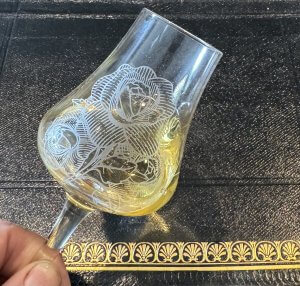
The story of Scotch is cyclical. It is one of success, miss-steps, triumph and no lack of hubris. You can read it in books, or, sometimes, in stone. The negative spaces in Campbeltown, the change of function from distillery to warehousing and storage (Convalmore), or the deserted shells that sit Ozymandias-like as warnings to the new and keen.
It’s that last thought which would run through your head as you stood on the banks of the Union canal in Falkirk looking at the shuttered Rosebank, silent since 1993. Rusted machinery inside, shoals of shopping trolleys opposite in the stagnant water.
It wasn’t always like this. Rosebank might have started with the Stark brothers in 1798, or with James Robertson in 1817. It was definitely up and running by 1840 when it was either owned (or built) by James Rankine. In 1841 Rankine bought the Camelon distillery on the other side of the canal, and in 1860 demolished its distillation side, but retaining the maltings.
It all made sense. The linked Union and Forth & Clyde canals were a conduit along which could come barley, peat, coke, and casks both empty and full, destined for the blending houses in Glasgow and Edinburgh. Having a larger maltings allowed Rosebank to increase capacity and build its reputation.
All was set fair, but following a downturn in the market, in 1914 Rosebank, along with Clydesdale, Glenkinchie, Grange and St Magdalene, merged to form Scottish Malt Distillers (SMD). The company was then absorbed into DCL in 1919. Rosebank with its triple distilling was now a prized make for blends.
All was to change again in the 1980s. Sales of Scotch blends were in precipitous decline, warehouses were stuffed with unwanted stock, distilleries closed. ‘Look on my works, ye mighty, and despair.’
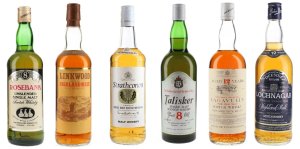
The surplus forced the major blending houses to explore single malt seriously and in 1982 DCL launched The Ascot Malt Cellar, consisting of Rosebank 8yo, Linkwood 12yo, Talisker 8yo, Lagavulin 12yo, (all of which had been available as bottlings since the late ‘60s) and two vatted (aka blended) malts, Strathconon and Glenleven.
With only lacklustre support, the Ascot Cellar failed, but in 1988 the UD tried again, this time with its Classic Malts, six single malts from different regions sold as a pack and seeding in the idea that you could tour Scotland and Scotch by flavour.
Given Rosebank was in the Ascot Cellar it seemed logical that it would be relaunched as a Classic Malt, but wider economics forced a rethink. Central Scotland in the 1980s was not a happy place. Industries were closing, unemployment was rising. The days when Falkirk’s kids learned to swim in the worms-warmed water beside the distillery had gone. The canal was clogged, silent.
Rosebank might have been revered by those in the know, but it was in the wrong place at the right time. The decision to become the Classic Malts’ Lowland representative came down to a distillery in gentle farmland south of Edinburgh and one next to a disused canal in a housing scheme.
It was a sign of how the nature of whisky was changing. Now a distillery’s function wasn’t just to be measured on its spirit quality, but on its tourism potential. If single malt was going to grow then you needed feet through the door, a car park, and an image. The days of being an anonymous provider of fillings was coming to an end. Rosebank fitted that earlier model. It was out of step with the new.
Five years after Classic Malts were launched, Rosebank closed. Over the years, the roofs went, pigeons took up residence, copper thieves stole the stills, the worms were cut in half. In 2002, the site was purchased by British Waterways (now Scottish Canals) , which sold off some of the property for conversion into a series of canal-side apartments and a restaurant (now a Premier Inn). They had also turned their attention to the canal which had begun to be cleaned up.
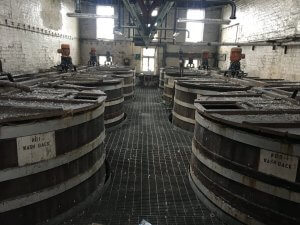
In 2002, the 12 locks which linked the the Union and the Forth & Clyde canals were replaced by the Falkirk Wheel – the world’s only rotating boat lift. In 2013, it was joined by the Kelpies, two massive sculptures of water horses’ heads, which were erected beside the canal. Regeneration, tourism… but still Rosebank sat silent.
It had to wait until 2017 when Ian Macleod managed to buy both the site (from Scottish Canals) and, as importantly, all of the remaining stock and trademark from Diageo. I went there two years later. Broken windows, graffiti, pigeon shit everywhere, the enormous mash tun rusted, its gears seized up, holes where the stills would have sat. Cold and ravaged. This would be a complex build, but enthusiasm prevailed.
‘It was too good to be true that the lease was up for grabs,’ Ian Macleod’s MD Leonard Russell told me on that visit.‘We didn’t do any business planning. You didn’t need to, because it was too obvious. We were really lucky.’
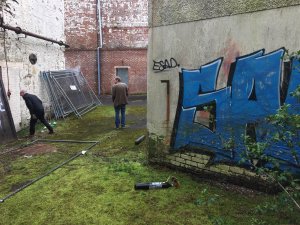
The key was getting the stock? ‘Absolutely. I thought that even if we had the stock in isolation, we will not be embarrassed because it will be valuable. If cash flow prohibited a rebuild, we could always sit on it and look after the whisky with care and love. It’s made me so proud, because Rosebank is a proper, proper whisky. This is a dream.’

It’s a dream that’s now a reality. The buildings have been reconfigured, some walls demolished, other rebuilt and repointed. Inside, there’s new linking passageways. There is space and a sweep to the design. It breathes.
The production area at its heart is now on a single level. The 100 year old mill, originally from Port Ellen, still works giving enough grist for 17, 3.2 ton mashes a week. The clear wort goes into one of eight new wooden washbacks for a ferment lasting between 62 and 72 hours.
It’s the trio of stills that you’re drawn to. Like Mortlach they look like they’ve been bought in a yard sale. The wash still has a flat top and upward lyne arm – a larger version of Craggamore’s spirit still. The intermediate still, by contrast, has a ridiculously tall tapering neck, while the spirit still is squat and onion shaped. Though all are larger than the originals the shapes are the same.
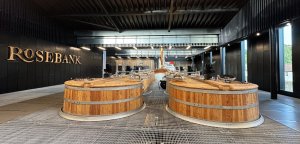
‘When they were being lowered into place I thought they’d got them muddled up,’ manager Malcolm Rennie told me at the opening. ‘The order just didn’t make any sense.’
If the build was tricky, then trying to discover the secrets of Rosebank’s character was an even greater challenge. What’s the grist ratio, how long should the ferment be, what’s the speed of distillation, are the cut points, how does the flavour build through the process; then how to run the new worms?
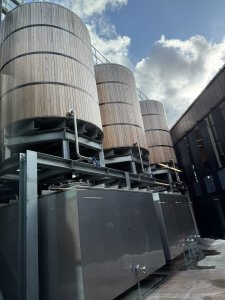
We knew what a 12 year old looks like (Ian Macleod also got that remaining Flora & Fauna stock) but the question for Malcolm and team was how to align the new make from this motley collection of stills to that model.
It’s taken months of methodical tweakings at mill, mashtun, washbacks, stills and worms to get to a new make which promises to evolve like Rosebank should. ‘We run the wash still from 8% abv to 21%,’ Malcolm explains. It gives an estery character – that flat top and upward angle helps with that.
‘The intermediate still is where the fruit comes in and we cut when the strength drops to 8% giving us an average of 41%.’ The feints are recycled in the still’s next run. ‘The spirit still, and the fact it’s all been run through worms, is what gives us the weight. The final strength is 77%.’
The result is a bright new make with floral touches, some apricot skin, lemon peel and with water added some green note and a little malt. Texturally it’s already thick. The fragrance, the flowers, the fruits already in place. Graceful with that important depth. It will last.
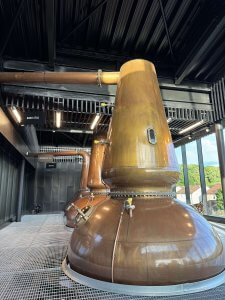
Who knows, it could end up with the tropical fruit salad, browning banana, ginger and musky florals of the 32 year old that Malcolm then pours me.
Where then does Rosebank sit alongside Scotch’s other two revenants, Brora and Port Ellen? That pair live off an established cult status with all that entails. Rosebank however has remained quiet. It didn’t fit in terms of location and neither, it would seem, did it fit into the flavour preferences of the new single malt lover. It delivered elegance, fruits, flowers, subtlety and length rather than smoke, oils, funk and physicality.
If you knew, you knew. Rosebank was a safer bet compared to the vagaries in flavour terms of Port Ellen, or Brora’s butyric years. It was, simply, always great. Yet it never cut through.
Does this lack of baggage make it easier, or more difficult? It might require more explanation in terms of the selling of the older stock, but at the same time not being a cult allows Ian Macleod time. There’s none of the dilemmas facing Port Ellen and Brora when it comes to the price positioning of the new spirit (which I wrote about here). It has to be right, but there’s a degree of breathing space around Rosebank.
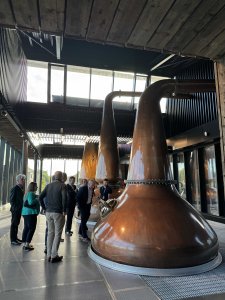
Its doors are open. People are happy to come to Falkirk, to walk beside or and sail on the canal, see the Kelpies and now visit a distillery.
The nature of whisky tourism has shifted from the 1990s. It’s moved away from bus parties needing a pee stop, a cup of tea and bit of shortbread. If you were lucky you might have sold a miniature. Now distilleries offer multiple types of tours, from the basic walk through and a dram, to in-depth behind the scenes, geek-driven ‘experiences’.
This places the revived distilleries in an interesting place. If there’s a finite supply of mature stock then it’s inevitable that you’ll have to restrict the amount of whisky you are able to sample. The question is, do you then shut off the distillery to all but the people who can afford to pay a huge price for the privilege, thereby risking building resentment, or do open the gates to all and then have to say sorry when they ask for a dram at the end of the tour? Might that also result in disgruntled punters?
If whisky consumers feel that they are being priced out of the market at retail level should the same be happening with tours? As ever, it’s about balance.
For example, the top-priced Brora tour costs £900, its next one is priced at £250. Both include tasting and are by appointment only. Port Ellen’s top end ‘Atlas of Smoke’ is POA, its ‘Reborn’ (with tasting) is £200. The distillery also runs free tours once a month (though without tasting).
Rosebank’s ‘basic’ tour is £25 with a tasting of Glengoyne and Tamdhu, while one including a tasting of Rosebank 31yo is £95. Its top end tour, with three samples of Rosebank, is £300.
An overly heavy reliance on the top end is a dangerous game to play. Already we are seeing volume of ‘luxury’ whiskies slowing, auction prices falling. The top end is either saturated, the buyers bored and looking elsewhere, or even at this rarified level asking where the value is. Aiming solely at the high roller who can have a tour, pop a case in their Aston Martin and drive off is not a wise long-term strategy.
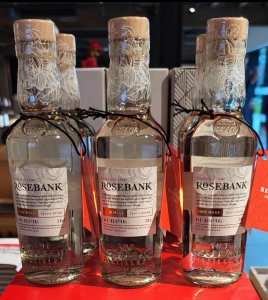
Most whisky is sold in the mainstream market. This is where your new drinkers are and they are also the ones who want to come to your distillery. With the market softening, then the mid-market has to be targeted not just with sensibly priced bottles, but also sensibly priced tours and education. Don’t forget your bread and butter.
There needs to be a careful reading of who the whisky consumer is: not just by demographics, but by their desire for knowledge. Rosebank closed not because of the quality of its spirit, but due to being perceived to be unable to deliver the right image and message. Now reopened, that is the main thing to address and the initial signs are that the right balance is being hit.
‘It’s a long-term legacy I want to build,’ Leonard told me on that 2019 chat. ‘It’s going to take a long time, but we have sufficient sales to be able to take a long-term view. That said, I’m nervous of what people will say about it.’ He can relax. This is a proper, proper distillery.